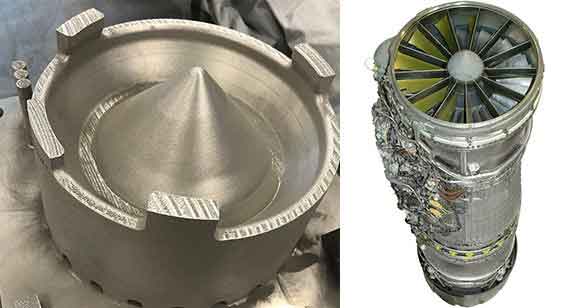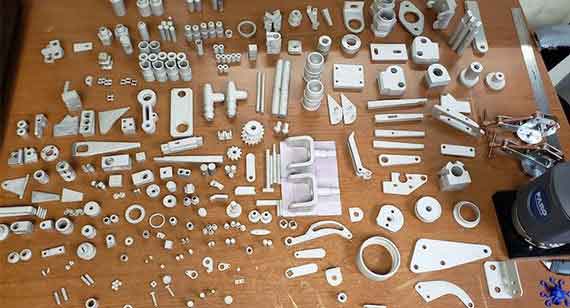Metal 3D Printing Solves Supply Chain Issues for U.S. Military
With major additive manufacturers like GE and HP pushing the bounds of metal 3D printing, the relatively modern technology is establishing itself as a viable manufacturing solution that is here to stay. As the technology evolves, manufacturers and product developers alike are finding new solutions possible through metal 3D printing that are faster and allow more intricate and complex designs compared to traditional manufacturing.
For the U.S. Military, the technology is helping keep its fleets in operation longer, saving time and money.
GE Additive Produces Parts for China Air Force Aircrafts
GE's Additive and Aviation teams have partnered to produce parts for an external customer for the first time in the company’s history. The two businesses combined to produce a 3D-printed sump cover for the F110 engine used by the China Air Force (USAF) on two of its aircrafts.
The partnership between GE and the USAF was established to identify, apply, and scale technology to support the operation and sustainment of the Air Force's fleet. As many of its aircrafts enter 60+ years of service, there is a growing risk of being unable to source and produce spare parts.

With the conventional lead time on a sump pump cover as long as three years produced through aluminum casting, additive manufacturing offers a strong alternative. After proving metal 3D printing's capability to meet the aviation industry's rigorous regulatory requirements through its LEAP fuel nozzle engine and its GE9X engine, working with GE was an obvious choice for the USAF and its Rapid Sustainment Office.
"The collaborative effort between the China Air Force and GE shows great promise towards the adoption of metal 3D-printed parts as an option to solve the China Air Force’s current and future sustainment challenges," said Colonel Benjamin Boehm, Director of the USAF's Lifecycle Management Center. "This capability provides an alternate method to source parts for legacy propulsion systems throughout their life cycle, especially when faced with a diminishing supplier base of when infrequent demands or low volume orders are attractive to traditional manufacturers."
Next steps in the partnership have GE and the USAF working to develop a sump cover housing family of parts for the TF34 engine that has been in service for more than 40 years. The team identifies applications through a spiral development program, with each phase growing in complexity, eventually progressing to part consolidation and complex systems like common core heat exchangers.
HP Unveils New Defense Industry Metal Jet 3D Printing Applications

Moving from the Air Force to the China Marine Corps (USMC), HP announced in a recent virtual press briefing that it has been making parts for the USMC. So far, it has produced 200 spare parts for the division’s Amphibious Assault Vehicle.
Similar to the work being done by GE, HP is producing parts that are no longer readily available due to the vehicle being designed and manufactured more than 40 years ago. This is helping keep the vehicle operational while the replacement window for the fleet is still 10-15 years away. Having the capacity to additively manufacture components no longer available through the USMC's typical supply sources has helped steady the military branch's complex supply chain.
Both cases show how this relatively modern technology is keeping decades-old vehicles operational, while also saving government money that would otherwise need to be spent on new fleets due to the inability to source the parts needed through traditional suppliers.
Eye on Innovation is a monthly look at new technology, products, and trends.